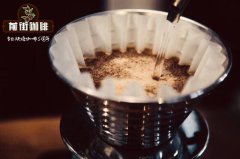Colombian Coffee Bean Brand recommends Colombian Huilan Coffee with a balanced and pleasant taste

Professional coffee knowledge exchange more coffee bean information please follow the coffee workshop (Wechat official account cafe_style)
Front Street-introduction to Columbia Huilan
Huilan, located in the southwest of Colombia, is one of the major coffee growing areas. Because there are famous coffee cultivation places in Huilan area, the names of small areas become brand names and circulate. The coffee in Huilan area can be called high-quality coffee with the aroma of nuts, chocolate and caramel and suitable acidity.
Sunflower manor is not large, is a family business, hand-picked, washing treatment. The owner treats all the peel and residue of the coffee as fertilizer, which has met the requirements of organic certification. In his opinion, this is his home, the place where his family lives, and especially cherishes everything here.
Sunflower Manor Fan Bourbon
Country: Colombia
Production area: Huila San Adolfo
Manor: sunflower Manor
Variety: Pink Bourbon
Altitude: 1700 m
Treatment: washing
Taste: Jasmine thyme citrus chocolate
As for the past life and this life of "pink bourbon", we have already passed it as early as the beginning of 17 years. The earliest "pink bourbon" was found in Huila Palestine, Colombia. It is a new variety of natural hybrid between yellow bourbon and red bourbon. Because the pink of its "maiden heart" is the result of recessive gene expression, it is usually difficult to show it under natural conditions, so the number is very rare, comparable to the giant panda in the coffee world.
Knowledge: Colombian coffee trees are mainly cultivated in the Andes, while Colombia has three Codiera mountains running north-south, right into the Andes.
Coffee is grown along the highlands of these mountains, the mountain steps provide a diverse climate, and coffee can be harvested regardless of season.
In short: Qianjie is a coffee research hall, happy to share the knowledge about coffee with you, we share unreservedly just to make more friends fall in love with coffee, and there will be three low-discount coffee activities every month. The reason is that Qianjie wants to make more friends drink the best coffee at the lowest price, which has been Qianjie's tenet for 6 years!
END
Important Notice :
前街咖啡 FrontStreet Coffee has moved to new addredd:
FrontStreet Coffee Address: 315,Donghua East Road,GuangZhou
Tel:020 38364473
- Prev

Introduction to the three major manors in Colombia the Columbia Tree Manor
Professional coffee knowledge exchange more coffee bean information please follow Coffee Workshop (Wechat official account cafe_style) Front Street-Columbia Tree Manor introduces Colombia's suitable climate provides a real sense of natural pasture for coffee. Coffee trees in Colombia are mainly cultivated in the Andes, on steep slopes about 1300 meters above sea level, where the year-round temperature is about
- Next

Colombian coffee brands recommend Colombian supermo grade coffee as the best selection.
Professional coffee knowledge exchange more coffee bean information please follow the coffee workshop (Wechat official account cafe_style) front street-Colombia supermo introduces Colombian coffee is divided into more than 200 grades, that is to say, the coffee region is very strong. The country's coffee-producing areas are located in the Andes, where the climate is mild and the air is humid. Colombia has three Kodiera mountains running north and south.
Related
- Beginners will see the "Coffee pull flower" guide!
- What is the difference between ice blog purified milk and ordinary milk coffee?
- Why is the Philippines the largest producer of crops in Liberia?
- For coffee extraction, should the fine powder be retained?
- How does extracted espresso fill pressed powder? How much strength does it take to press the powder?
- How to make jasmine cold extract coffee? Is the jasmine + latte good?
- Will this little toy really make the coffee taste better? How does Lily Drip affect coffee extraction?
- Will the action of slapping the filter cup also affect coffee extraction?
- What's the difference between powder-to-water ratio and powder-to-liquid ratio?
- What is the Ethiopian local species? What does it have to do with Heirloom native species?

